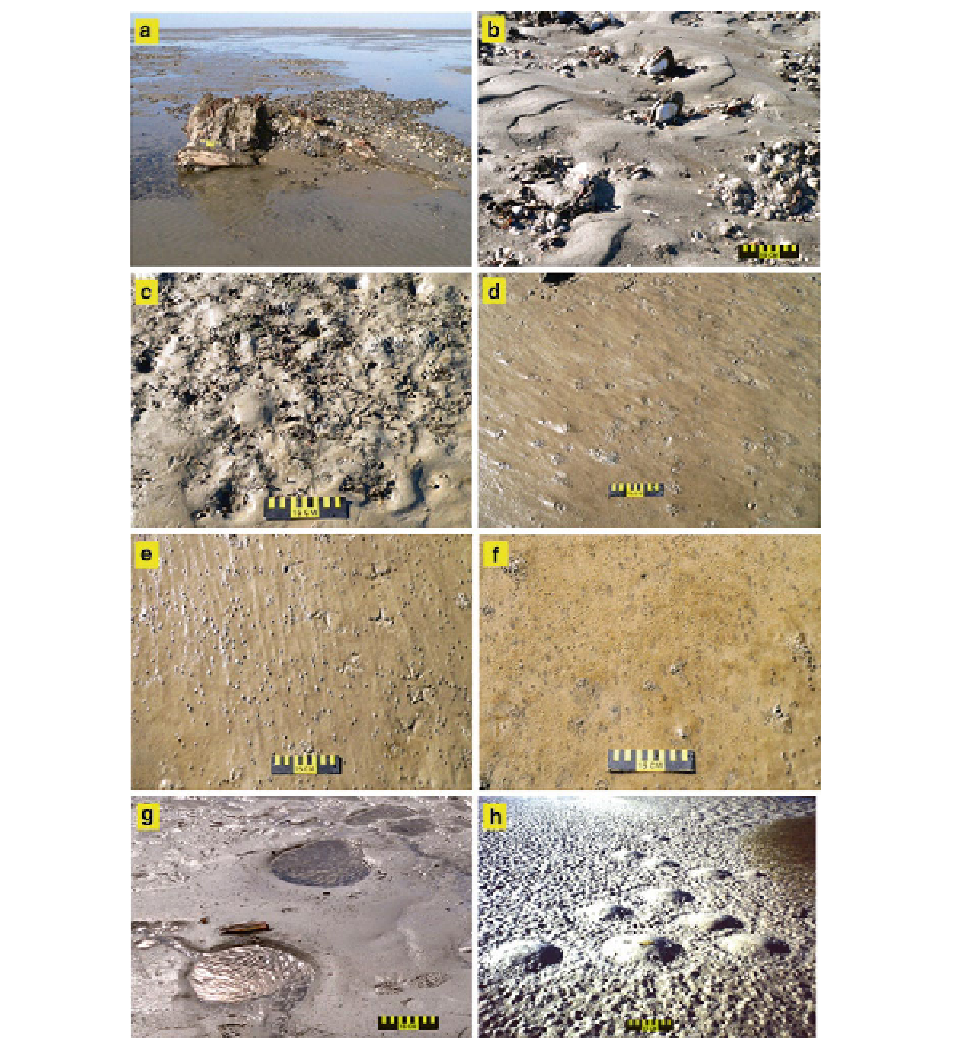Geology Reference
In-Depth Information
Fig. 10.16
Evidence for biological activity on tidal flats. (
a
) Rooted
tree stump; (
b
) Shell lag together with articulated bivalve shells
in live position (
Mya arenaria
); (
c
) Protruding polychaete tubes
(
Lanice conchilega
) together with bird tracks and crawling
traces of intertidal snails; (
d
) Sandy mud flat colonised by juve-
nile bivalves (
Cerastoderma edule
) living just beneath the sedi-
ment surface. Note bird track at the top and the uniformly
aligned mounds and streaks indicating current flow from lower
right to upper left; (
e
) Muddy sand flat with small polychaete
fecal mounds (
Heteromastus filiformis
). Note the bird tracks and
the current-aligned streaks emanating from the fecal heaps (cur-
rent from bottom to top); (
f
) Slightly muddy sand flat colonised
by
Arenicola marina
(large stringy fecal heaps) and
Heteromastus
filiformis
(small
gray
fecal patches). Note patches of diatoms
(
brownish discoloration
) producing gas bubbles (oxygen);
(
g
) Feeding hollows created by trampling seagulls; similar
hollows are made by rays; (
h
) Feeding hummocks created by
flamingos (here in Langebaan Lagoon, South Africa)

